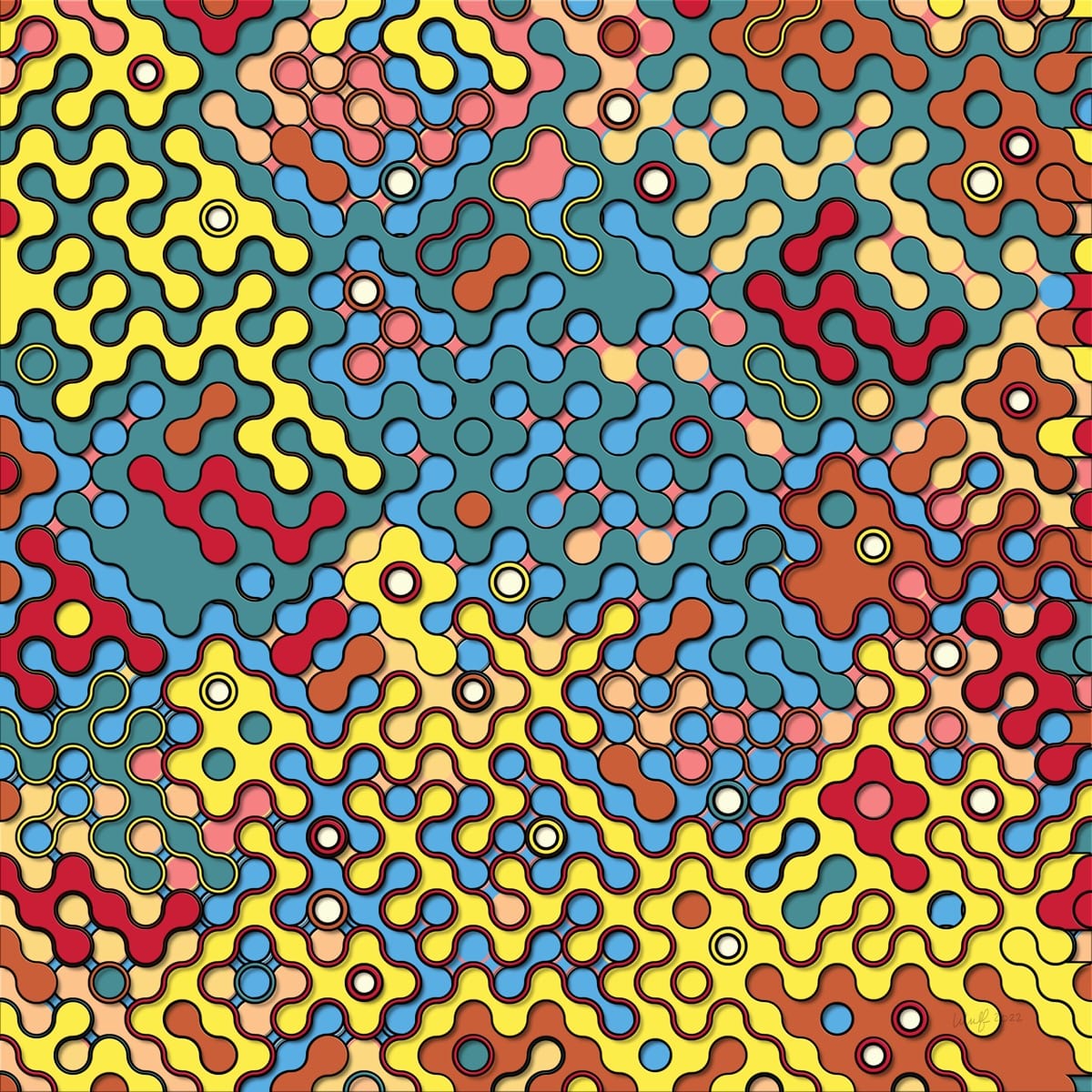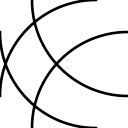My Art And Color-After Tiling

I make generative art with Swift and use tiling in many pieces. Truchet tiles are generally arranged randomly and contain everything appearing in the final image. What I do differently is to separate the layout of tiles from colorizing the image. I call this technique "Color-After Tiling."
For example, this tile (a 1x1) was used for "Tiling #1."

In raw form, it looked something like this:

Finally, with a bit of color and shadow:

Additionally, the following tile (a 2x2) was used to make the work "Shield Wall":


I will randomly lay out the tiles, which contain only lines, and then use my tools to fill the contiguous areas with other graphics (solid colors, paint, geometric shapes, etc.), which removes the lines. Sometimes, I fill the areas randomly, and sometimes (as in this case), I choose which areas become which color. This gives me more complex images than a traditional Truchet tile.
Tiles consist of 1x1, 1x2, 2x2, and 3x3 tiles with a consistent scheme so that they all sync together, generally the midpoint of each side of the 1x1. So far, I have defined nearly 60 different tiles. I use them in various combinations, including all tile sizes in the same image. The key is to eliminate each tile's lines, which can be used separately as another layer, as in the above example.
There are two ways to implement this: geometrically or using pixels. I create the tiles in code and then image them into a pixel image. The other method is to define everything geometrically and assemble the areas as vector shapes, filling those (and thus not having any strokes). I prefer the pixel method (at 300 dpi) as I have many CPU-based tools highly optimized for my platform (Mac Studio).
Most of my works range from 50 to 200+ megapixels.
Here are a few more examples of what I can do.
"Jamblaya": a 36"x36" that uses 3 2x2 tiles with a fill of nested ovals.

"Float On The Clouds": a 30"x30" using three 1x1 tiles painted.

"Sunny Delight": a 48"x36" using a single tile and multiple techniques.

"Happy Trails": a 40x40 using multiple techniques, using only a single 1x1 tile.

"A Smile A Day", a 48"x48" work using a single 3x3 tile with five connections per side:

This technique could be used in a limited fashion in the real world. You could draw the tiling on a canvas and then hand-paint the contiguous areas; on a floor, you could draw the tiling and then fill the areas with mosaic tiles, where grout will cover the lines. Doing a more traditional tiled floor or surface using ceramic tiles is possible: you would have to precalculate all the required combinations of unique tiles, which is likely prohibitively expensive for more than two colors. Unlike regular ceramic tiles, the final "image" combines shape elements, not simply the tiles themselves.
Generally, I use techniques different from those of my fellow generative artists. Being the only artist I know using Swift (most use Javascript), I benefit from higher-performance code and can try crazier things. Color-after tiling is not the only unique tool/process I use.
So far, I have more than 120 works using this method, about 13% of what I have listed on my website. I am not selling any of them yet: without a wider audience, there is little point. No one in the greater art community has any idea I exist!
I design my art to be single-edition prints, ranging in size from 20" to 48" (and one 60"), to be printed at 300 dpi.

